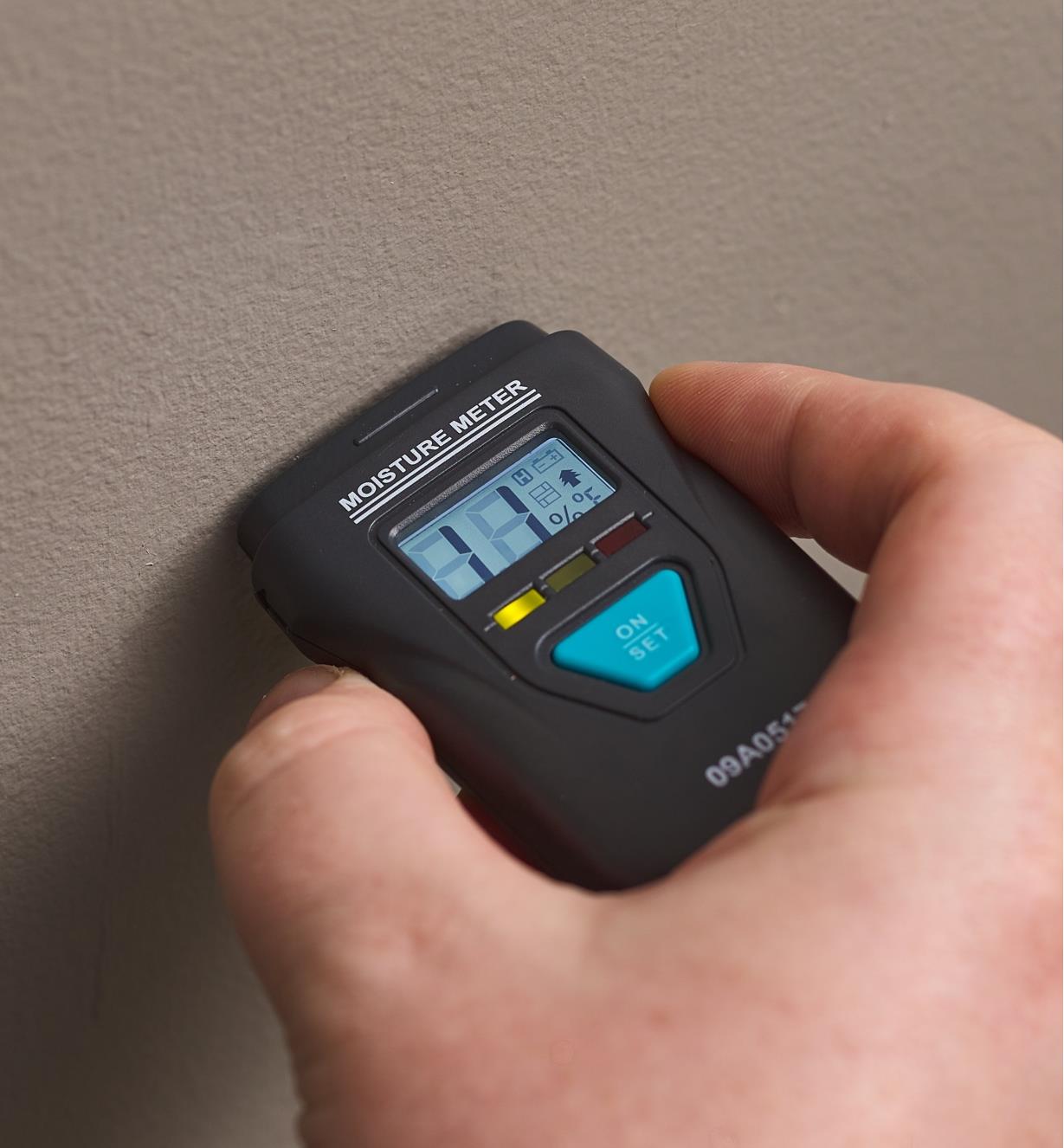Explore the World of Moisture Meters: Every Little Thing You Required to Know
In the realm of wetness meters lies a globe of accuracy and functionality that typically goes undetected. Recognizing just how moisture meters run, the various kinds readily available, and their diverse usages can shed light on their value in guaranteeing high quality and efficiency.
How Moisture Meters Work
Moisture meters run by gauging the electric conductivity or capacitance of materials to figure out the moisture content present. These meters are vital tools across different industries, including building, agriculture, and woodworking. By utilizing different approaches such as pin-type or pinless technology, dampness meters supply accurate readings that help professionals make educated decisions.
Pin-type dampness meters function by inserting the sharp pins right into the material being tested. The electric conductivity in between the pins is after that measured, with higher wetness degrees bring about enhanced conductivity. Moisture Meter. On the various other hand, pinless wetness meters use electro-magnetic signals to check a larger area without causing any damages to the material's surface area. These meters are perfect for rapidly assessing moisture degrees in large areas or ended up products.
Despite the method used, moisture meters play a critical role in avoiding problems such as mold and mildew development, architectural damage, or product defects triggered by excess wetness. Comprehending exactly how these meters work is essential for ensuring the quality and stability of products in various applications.
Kinds Of Moisture Meters
Provided the vital function dampness meters play in different industries, it is vital to understand the different types offered to professionals for properly evaluating wetness degrees - Moisture Meter. There are primarily 2 main kinds of dampness meters: pin-type and pinless moisture meters

On the various other hand, pinless moisture meters use electromagnetic sensing unit plates to check a larger location of the product without causing any damages. This type is ideal for quickly scanning large locations and is generally used for flooring, wall surfaces, and ceilings. Pinless meters are hassle-free for taking readings on finished surfaces without leaving any type of visible marks.
Both kinds of dampness meters have their benefits and are picked based upon the specific needs of the task handy. Recognizing the distinctions between these kinds is crucial for professionals to make exact moisture assessments.
Applications Across Industries
With varied capabilities, dampness meters locate prevalent application throughout various industries, assisting specialists in ensuring ideal conditions for products and frameworks. In the agriculture sector, wetness meters are important for establishing the dampness material in grains, seeds, and hay, making sure quality control and stopping mold development. Construction professionals rely upon wetness meters to examine the dampness degrees in structure products like concrete, drywall, and timber, which is crucial for maintaining structural integrity and avoiding problems like rot or mold. The flooring market uses wetness meters to determine the dampness web content in subfloors prior to mounting numerous floor coverings, avoiding expensive problems as a result of excess moisture. In the food sector, moisture meters are used to keep an eye on and regulate moisture levels in products such as grains, nuts, and dried fruits to preserve use this link quality and quality. Furthermore, moisture meters play an important duty in the remediation and damage control market by helping specialists attend to and identify water damages in buildings immediately. Across these varied industries, dampness meters are indispensable tools for ensuring the quality, security, and long life of numerous materials and items.
Tips for Utilizing Dampness Meters
Make use of the dampness meter's calibration settings to guarantee precise readings when look at here now determining the wetness material in different materials. Furthermore, make sure the meter is set to the appropriate wetness range for the material you are measuring to obtain the most precise results.
When using a pin-type moisture meter, insert the pins to the ideal deepness advised for the product being checked. This makes sure that the wetness readings are drawn from the appropriate deepness within the product, supplying a much more exact depiction of its dampness content. For pinless moisture meters, remember to preserve appropriate contact with the material's surface to get trusted analyses.
Consistently check and replace the batteries in your moisture meter to avoid imprecise analyses due to reduced power. Store the meter in a safe and dry place when not in usage to prolong its life-span and maintain its precision. By complying with these pointers, you can maximize the efficiency of your moisture meter and get exact moisture web content measurements throughout different materials.
Maintenance and Calibration
To ensure the precision of dampness web content measurements, normal upkeep and calibration of the moisture meter are necessary steps in its proper functioning. Calibration changes the wetness meter to make certain that it gives consistent and reputable results.
Calibration must be done occasionally, specifically if the dampness meter is made use of regularly or in critical applications where precise measurements are required. Numerous wetness meters feature calibration devices or can be calibrated by professional services. Moisture Meter. It is suggested to keep a log of calibration dates my site and results to track the efficiency of the wetness meter gradually. By calibrating the moisture and keeping meter consistently, customers can trust the accuracy of the dampness material measurements gotten.
Conclusion

To conclude, dampness meters play an essential function in various industries by properly determining the moisture web content of materials. Understanding just how these tools work, the different kinds available, and correct upkeep and calibration are important for acquiring dependable results. Whether in construction, farming, or manufacturing, the usage of dampness meters helps ensure quality assurance and performance in processes.

In final thought, moisture meters play an important function in different industries by properly determining the dampness content of products.